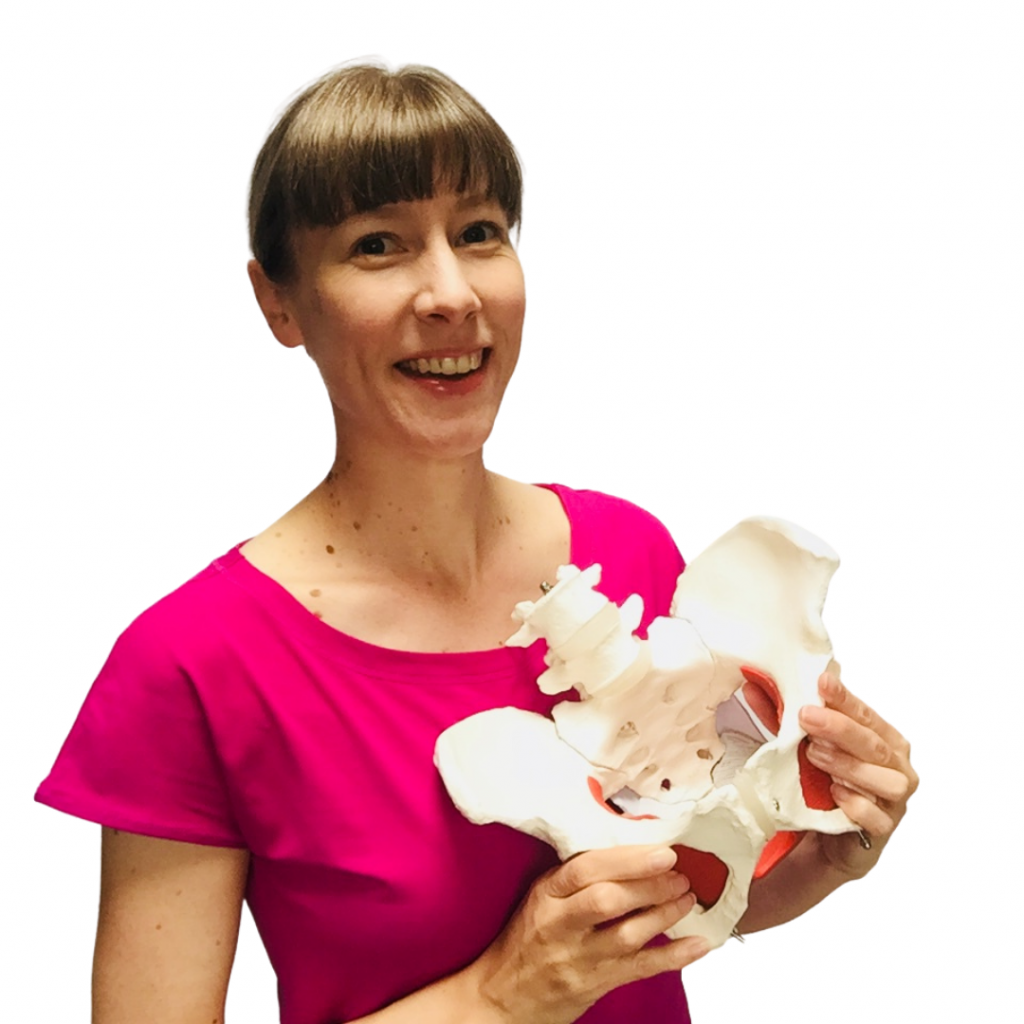Today, I thought I’d cover diastasis recti / abdominal separation, pressure issues, and the linea alba, so strap yourself in here fellow FitPro.
Anatomically speaking, ALL of the core muscles connect indirectly to the linea alba at the front of the body.
This means that repetitive motions or chronic tension in ANY of these muscles (the obliques and transverse abdominals included) – can slowly affect the linea alba which can lead to abdominal separation / diastasis recti.
Here are 5 ways the linea alba can be incorrectly loaded:
1) LOADING THE LINEA ALBA IN STANDING
If your client stands with their pelvic weight thrusted out in front of them, it will strain the linea alba with all of that extra unnecessary load being applied against it.
And, oftentimes when people stand with their weight out in front, they lift their ribs up too which moves the muscle attachments of the rectus abdominis away from one another.

When clients sit, or have deskbound jobs, this sedentary lifestyle means they don’t move very often throughout the day
2) SITTING = STIFFENING
If clients have been sitting down at a desk for the past several of decades, staying in that one position (mainly sagittal plane) for all of that time, it means they’ve rarely ever reached their arms over their head, laterally flexed nor rotated for the best part of their working life.
This static posture results in the muscles at the waist becoming so tight that those shortened obliques start pulling on the linea alba.
Hello diastasis, my old friend…
I’ve come to pressure you again…
3) LINEA ALBA LOADING IS NOT JUST A PREGNANCY-RELATED ISSUE
Another force factor to consider from within the body here is extra intra-abdominal or visceral fat.
Men, women, people who’ve had babies, people who haven’t had babies can all develop diastasis recti.
NB – And, I know weight gain can be a sensitive topic, and I definitely do not condone the whole “bounce back after baby” culture that happens when clients have a newborn to care for, but it’s definitely important for you to understand that fat from inside the body can apply loads outwards, towards the linea alba.
4) CROUCHING TIGER, TWISTED PELVIS
 Maybe your client has been relatively active, but they have a pelvis that’s slightly twisted to the right, and a ribcage that’s slightly shifted to the left?
Maybe your client has been relatively active, but they have a pelvis that’s slightly twisted to the right, and a ribcage that’s slightly shifted to the left?
This means their umbilicus is no longer exactly in the centre of their body anymore.
And, to be honest, there’s only so much tugging that that off-centred linea alba is going to tolerate before the pressure gets too much, so getting the pelvis and ribcage better aligned is your job as their diastasis recti expert.
5) RIGHTY, OR LEFTY?
Playing a racket sport like tennis is a great example of creating muscular imbalances, as one side of the abdominals has to work harder than the other side, every single time the ball is served.
The same could be related to a mum who’s already had children who carries her baby on one hip.
Or, if someone’s lifting and carrying habits mean that they’re so incredibly dominant on one hand, that they’re actually unable to re-program the pathways for simple tasks like putting on their backpack on the other shoulder first.
Wearing a bag over one shoulder isn’t massively amazing either, and I’m hoping that now you’re finally realising all this pushing and pulling, habitually over time, again and again is really not helping?
Whatever the forces and however they’ve been generated, one thing’s for sure though
You can change the loads applied to the linea alba in your prenatal clients DURING the prenatal period itself, and you can safely alter your clients’ pressure forces post-birth too
You need to know how to properly align your clients; how to build them a reflexive core unit; and more importantly, inform them about what movements they are (and aren’t) doing that may be attributing to a diastasis or distension of their abdominals.
I cover this and many more aspects, in the same fun, factual way in Diastasis Detective Teacher Training program.
I hope this article has answered all of those linea alba questions you’ve ever had.
And, if you do decide to enrol on the Diastasis Detective course, it will truly make my day (and the week, and the YEAR of the clients that you’re going to be able to help too!)




